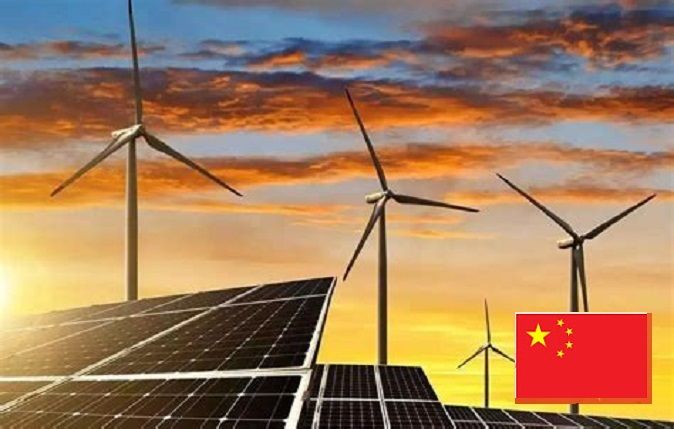China’s world-leading clean energy boom has passed another benchmark, with its wind and solar capacity surpassing a target set by President Xi Jinping almost six years earlier than planned.
Citing Bloomberg, Energy Connects reports that China added 25 gigawatts of wind and solar power in July, expanding total capacity to 1,206 gigawatts, according to data from China’s National Energy Administration on Friday. Xi set a goal in December 2020 for at least 1,200 gigawatts from the clean energy sources by 2030.
China by far outspends the rest of the world when it comes to clean energy, and has repeatedly broken wind and solar installation records in recent years. The rapid growth has helped lead to declines in coal power generation this summer and may mean China has already reached peak emissions well before its 2030 target.
Meanwhile, China has significantly curbed coal expansion in the first half of this year amid unmatched deployment of renewable energy, according to a report cited by Earth Org.
China cut back on new coal power permits by 83% in the first half of 2024 compared to the same period a year ago, permitting only 12 projects totalling 9 gigawatts.
The drop in new coal project permits coincides with the unprecedented deployment of renewable energy that remains largely unmatched anywhere in the world. Based on data released by the Chinese government last week, the Finland-based Centre for Research on Energy and Clean Air (CREA) reported that China’s solar and wind power generation has increased by 171 terawatt so far this year. This matches the entire amount of energy the UK produced from all sources in the same period in 2023.
In June, China said it is aiming to reach a 39% non-fossil fuel power generation target by the end of 2025. In 2022, non-fossil energy power generation was 36.2%, according to government figures.
This year, China also halted permits for new coal-based steel mills, the country’s second-largest source of CO2 emissions after electricity generation. The move is the latest sign of a significant shift from unconditional industrial growth to the prioritization of cleaner, high-value growth. China’s 2024-25 Action Plan on energy conservation and emissions reduction further reinforces this shift. Unveiled in June, the plan singles out high-emitting industries such as steel production, petrochemicals, non-ferrous metals, and building materials, setting ambitious emissions reduction targets.
Sources:
- Earth.Org, Aug 23, 2024. https://earth.org/china-slashes-coal-permits-amid…/
- Energy Connects, Aug 23, 2024. https://www.energyconnects.com/…/china-hits-xi-jinping…/
